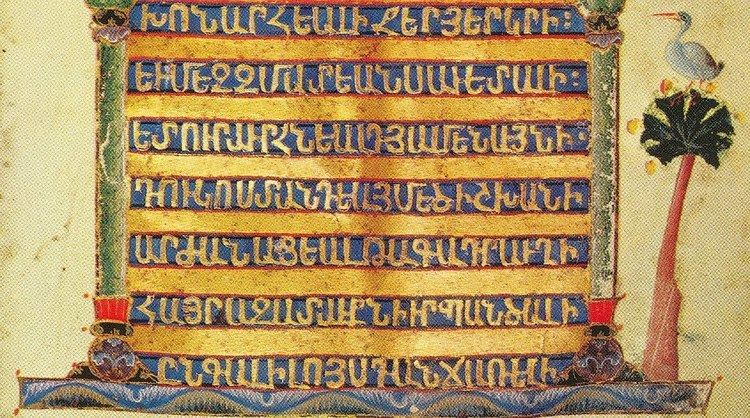 | ||
Proto-Armenian is an earlier, unattested stage of the Armenian language that has been reconstructed by linguists. As Armenian is the only known language of its branch of the Indo-European languages, the comparative method cannot be used to reconstruct earlier stages. Instead, a combination of internal reconstruction and external reconstruction, through reconstructions of Proto-Indo-European and other branches, has allowed linguists to piece together the earlier history of Armenian.
Contents
Definition
Because Proto-Armenian is not the common ancestor of several related languages, but of just a single language, there is no clear definition of the term. It is generally held to include a variety of ancestral stages of Armenian between the times of Proto-Indo-European up to the earliest attestations of Classical Armenian. Thus, it is not a proto-language in the strict sense, although the term "Proto-Armenian" has become common in the field regardless.
The earliest testimony of Armenian dates to the fifth century (the Bible translation of Mesrop Mashtots). The earlier history of the language is unclear and the subject of much speculation. It is clear that Armenian is an Indo-European language, but its development is opaque. In any case, Armenian has many layers of loanwords and shows traces of long language contact with Hurro-Urartian, Greek, Indo-Iranian, and Kartvelian.
Development
The Proto-Armenian sound changes are varied and eccentric (such as *dw- yielding erk-), and in many cases uncertain. For this reason, Armenian was not immediately recognized as an Indo-European branch in its own right, and was assumed to be simply a very eccentric member of the Iranian languages before Heinrich Hübschmann established its independent character in an 1874 publication.
Proto-Indo-European voiceless stops are aspirated in Proto-Armenian, a circumstance that gave rise to an extended version of the glottalic theory, which postulates that this aspiration may have been subphonemic already in PIE. In certain contexts, these aspirated stops are further reduced to w, h or zero in Armenian, e.g. PIE (acc.) *pódm̥ "foot" > Armenian otn vs. Greek (acc.) póda, PIE tréjes "three" > Armenian erekʿ vs. Greek treis.
The Armenians according to Diakonoff, are then an amalgam of the Hurrians (and Urartians), Luvians and the Mushki. After arriving in its historical territory, Proto-Armenian would appear to have undergone massive influence on part the languages it eventually replaced. Armenian phonology, for instance, appears to have been greatly affected by Urartian, which may suggest a long period of bilingualism.
Diakonoff (1985) and Greppin (1991) etymologize several Old Armenian words as having a possible Hurro-Urartian origin:
Arnaud Fournet proposes additional borrowed words.
